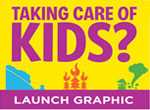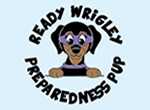Shelter in Place: Reagan’s Story
A storm can last for minutes, hours, or days, but the effects on families can be felt even longer. In case of an emergency, a shelter in or near your home filled with extra supplies can be helpful for families when caring for a child with a special health care need.

Living in a small town in tornado alley, Angelia had always prepared for being in a storm shelter for a couple of hours to ride out a storm. But when a F5 tornado struck her town in 2011, she realized that more planning was needed to meet her daughter’s health needs. “Having a tornado come through town made me aware that I really was not prepared for all situations,” says Angelia. Her daughter, Reagan, has Type I diabetes, which requires her to have extra supplies and items such as an insulin pump, batteries, and medications to maintain her blood sugar levels. She also requires snacks to help raise her blood sugar in case it gets too low. After the tornado hit, Angelia and her family were left without power for several days, and the pharmacy where they could get Reagan’s medicine was closed due to storm damages. Angelia soon realized that there were not enough supplies packed in the shelter to manage Reagan’s medical condition.
Angelia wants other families to know that “you can never have enough supplies on hand.” Create an emergency plan that involves sheltering in place and keep extra supplies that you can bring into a shelter to care for your child.
Angelia suggests a few items for parents to consider in their emergency planning for a child with needs similar to Reagan’s.
Emergency Folder
- List of all medications and their doses
- List of healthcare professionals and their contact numbers
- Pharmacy phone numbers within the area
- Copy of healthcare plan from diabetes care provider
- Copy of insurance cards
- Copy of student ID or driver’s license, if available
Emergency Bag – Extra considerations for individuals with diabetes
- Extra test strips
- Insulin – if possible, keep cool using cold packs
- Syringes – can be used as a backup for administering insulin
- Insulin pump supplies
- Extra batteries for insulin pump
- Extra testing meter
- First aid kit
- Water
- Juice and snacks for low blood sugar
For more information about sheltering in place, visit: http://emergency.cdc.gov/preparedness/shelter/
- Page last reviewed: July 26, 2017
- Page last updated: September 1, 2016
- Content source:


 ShareCompartir
ShareCompartir



